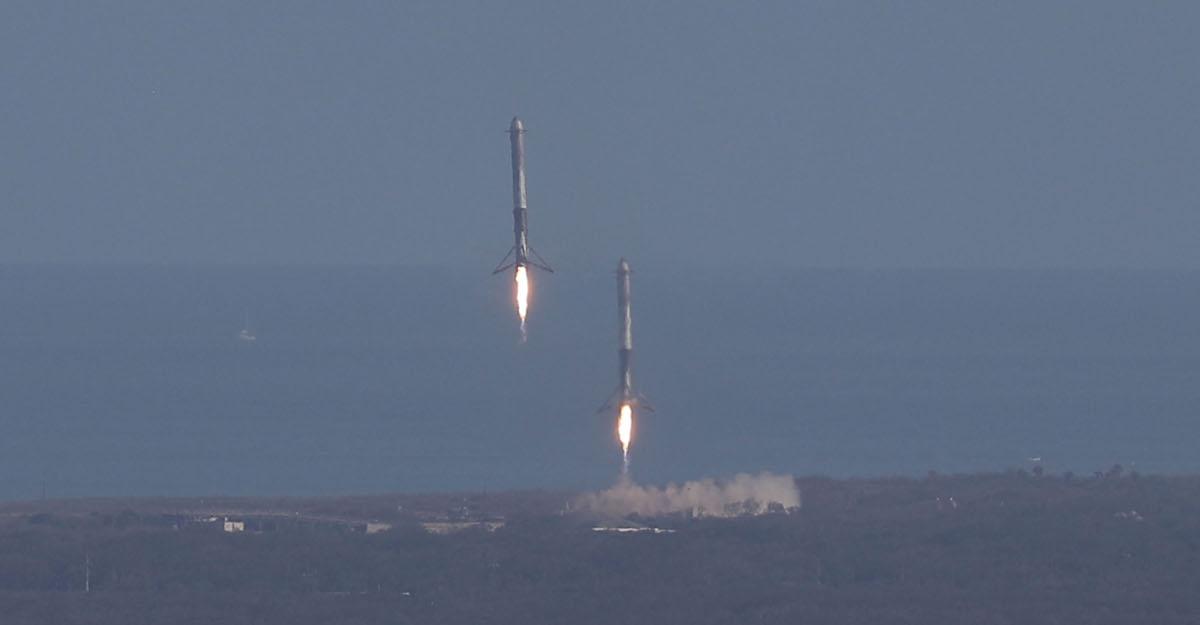Chinese Booster Rocket Debris Spirals Towards Earth — Here’s What You Should Know
Published July 28 2022, 2:26 p.m. ET

Most space junk is harmless to life on Earth, but it depends on the size of said debris. Large pieces could pose a risk, especially if controlled reentry isn't possible — which is why many are concerned about remnants of a Chinese booster rocket, Long March 5B, which is heading towards Earth.
Debris will most likely land in the Global South — hopefully into the ocean somewhere. But because it could theoretically land in an inhabited area, many are concerned about the damage it could do.
The rocket departed from Hainan Island on Sunday, July 24, but after successfully docking to China's orbital outpost, it started spiraling out of control, back towards planet Earth. As of publication, according to CNN, it's predicted to fall to earth early next week.
“It’s a 20-tonne metal object. Although it will break up as it enters the atmosphere, numerous pieces – some of them quite large – will reach the surface,” Michael Byers of University of British Columbia stated, per CNN.
Understandably, the minute risk has many feeling both concerned and agitated that it was able to get out of control in the first place.
“Why are we worried? Well, it did cause property damage the last time, and people are having to do preparation as a result,” Ted Muelhaupt, a space traffic expert and Aerospace Corporations’ corporate chief engineer’s office consultant, stated, per The Verge. “Furthermore, this is not needed. We have the technology to not have this problem.”

What to know about the Chinese booster rocket debris:
Beijing is closely tracking remnants from a rocket that are making an uncontrolled reentry to planet Earth, per Al Jazeera. The rocket's main-core stage is tumbling towards the planet, thanks to atmospheric friction, and though the body will disintegrate on its way down, parts will likely survive. It's expected to fall over the course of 1,240 miles by 44 miles wide.
Its destination is impossible to locate, but closer to its reentry, scientists will be able to make predictions.
As previously mentioned, many believe the risk to people and ecosystems is somewhat low, as most of what is in its path is likely water, desert, or jungle. However, it could still possibly make its way to a metropolitan area. The odds of anyone getting injured are killed are less likely than getting struck by lightning. While space experts are still frustrated this happened, it's such a minimal risk that it most likely won't result in any serious damage.
"Since the development stage of the space engineering program, China has taken into consideration the debris mitigation and return from orbit into atmosphere of missions involving rocket carriers and satellite sent into orbit," Foreign Ministry spokesperson Zhao Lijian stated on Wednesday, as per CBS News.
"It is understood that this type of rocket adopts a special technical design that most of the components will be burnt up and destroyed during the reentry process... The possibility of causing damage to aviation activities or on the ground is extremely low."

Unfortunately, this isn't the first time something like this has happened.
While everyone makes mistakes, this isn't the first time something like this has happened — therefore, this fuels the fire between NASA and China's space program.
In 2021, an out of control rocket fell into the Indian Ocean, relatively close the Maldives. Many weren't happy, and felt China's space programs should do more to ensure they're fully in control of their equipment.
“It is clear that China is failing to meet responsible standards regarding their space debris,” NASA Administrator Bill Nelson stated at the time, per the New York Post. “It is critical that China and all spacefaring nations and commercial entities act responsibly and transparently in space to ensure the safety, stability, security, and long-term sustainability of outer space activities."
Needless to say, we're hoping everything moves smoothly with Long March 5B's upcoming reentry.